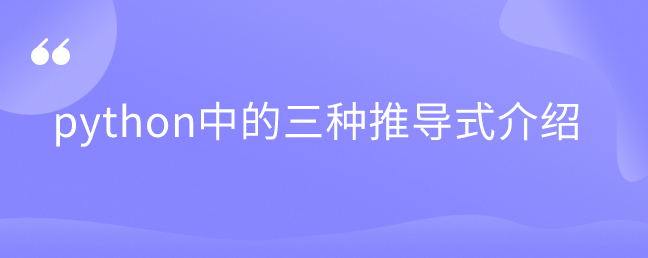
1、列表推导式,在一个中括号里包含一个表达式。
old_list = [0,1,2,3,4,5] new_list = [] for item in old_list: if item % 2 == 0: new_list.append(item) print(new_list)
2、字典推导式,把[]改成了{},并且组成元素有key和value。
old_student_score_info = {
"Jack": {
"chinese": 87,
"math": 92,
"english": 78
},
"Tom": {
"chinese": 92,
"math": 100,
"english": 89
}
}
new_student_score_info = {}
for name, scores in old_student_score_info.items():
if scores["math"] == 100:
new_student_score_info.setdefault(name, scores)
print(new_student_score_info)
3、集合推导式跟使用大括号{},组成元素也只要一个。
old_list = [0, 0, 0, 1, 2, 3]
new_set = {item for item in old_list}
print(new_set)
神龙|纯净稳定代理IP免费测试>>>>>>>>天启|企业级代理IP免费测试>>>>>>>>IPIPGO|全球住宅代理IP免费测试





